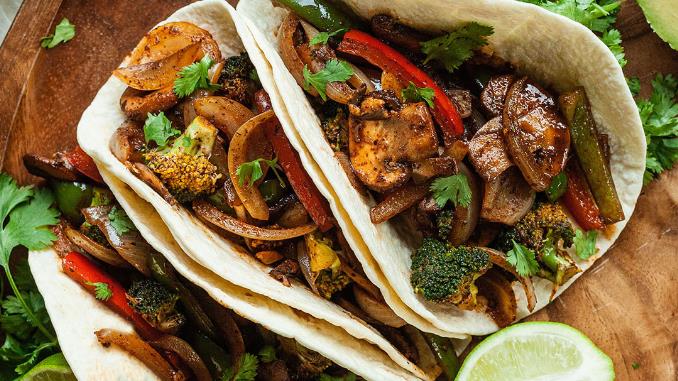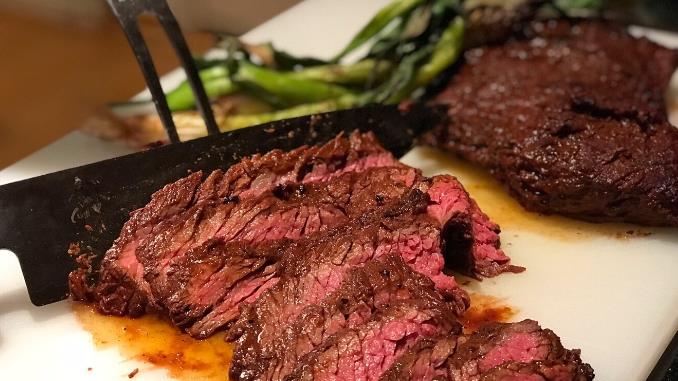Did you know?
Since both steak Fajitas and Carne Asada are usually cooked with skirt steak or flank steak, they can all be served on warm, soft corn tortillas and flour tortillas. Hence, many people have wondered whether or not they are the same thing besides the obvious difference in name.
In this article, you will learn about all the similarities and differences between Fajitas vs Carne Asada. So read on and find out the ultimate answer.
Related: Top 30 most popular Mexican dishes to try
What Are They?
Fajitas

In Tex-Mex cuisine (also known as the fusion between Mexico and southern American dishes), a Fajita is any stripped grilled meat served on a flour or corn tortilla with stripped pepper and onions. The term originally referred to the cut of meat used in the dish, which is skirt steak.
Meats that are frequently used for this dish also include chicken and various cuts of beef. Thus, vegetables can take the place of meat if you opt for the vegetarian option.
Fajita meat is commonly cooked with onions and bell peppers and served with shredded lettuce, sour cream, guacamole, salsa, pico de gallo, and chopped tomato as toppings.
Carne Asada

To begin with, “Asada” simply means “grilled.” Carne Asada is “grilled meat on a dish” in Spanish, and also a phrase used in Latin America to describe a particular kind of grilled meat in these countries.
As its name suggests, this dish often consists of skirt steak, sirloin steak, tenderloin steak, or rib steak. To give a burnt flavor, it’s frequently cooked with a marinade and some searing. It can be eaten as a main course or used as a filling for other meals. It is usually the filling of tacos and burritos.
The Main Differences
The cut of meat (and how tacos are involved here)
The distinction is in how the meat is sliced. Asada is an entire piece of beef that has been marinated and grilled. Before grilling, the meat can be marinated in various ways, from simply rubbing with salt to adding spice rubs like lemon and pepper or garlic salt and lime.
The meat for Asada should be marinated for no more than 7–8 hours in a blend of citrus liquids and spices. The citrus juices tenderize the meat, but they begin to break it down if left for too long. Beer is used in the marinade in some recipes.
Meanwhile, Fajitas are thinly sliced grilled beef pieces that are ideal for tacos. Thus, to make Fajita, slices of beef are often sautéed with bell peppers and onions. Since Fajitas come in thinner cuts, you don’t need to marinate them before cooking.
Hence, the difference you need to remember here is that Asada is the full piece of meat, and Fajita is thinly sliced meat.
The kind of meat (steak or pork?)
Any meat that has been marinated and grilled is known as Carne Asada. The meat is commonly flank, hanger, or skirt steak, and the marinade is usually spicy. It can be either beef or pork. Chicken served, in the same way, is known as Pollo Asado.
Fajita can also be chicken and pork as long as the meat is thinly sliced into strips and sautéed with onions and bell peppers.
Beef Fajitas (because you can also include chicken or pork) are almost always made from skirt steak (also known as flank or iron). In contrast, Asada is made from any kind of steak available (usually a cheaper cut is used in this case).
The chef’s recipes
Both are generally prepared in a pan or on a grill top at most restaurants. But, to achieve the best result, people would grill the Fajitas over an open flame or charcoal grill. If you cook your Asada at home, you can also use a charcoal grill to create a smoky taste.
Thus, since Fajitas are thin strips of meat, you can both grill them like Carne Asada or do a quick stir-fry, making them much more convenient to cook and prepare.
In both cases, the meat should not be cooked past medium-rare since the connective tissue in the meat becomes too chewy if it is overcooked.
Convertibility
Carne Asada is occasionally served with a side of tortillas so that you can make your own Fajitas. Feel free to use any type of Asada in tacos, burritos, sandwiches, or Fajitas (our Tex-Mex cuisine). Hence, Fajitas are Pollo Asado, or Carne Asada served with tortillas and grilled onions and peppers.
Although it is usually cut up and used as an ingredient in other cuisines, it can also be served as a main dish. Meanwhile, Fajitas are always served with others.
(Bonus Tip) How Do You Make Carne Asada At Home?
- Prepare: You need to prepare carefully. Mix your skirt steak with vegetable oil, soy sauce, orange juice, honey, lime juice, chopped garlic, cumin, oregano, chopped cilantro, black pepper, chopped jalapeno, and salt in a zip lock bag. Seal the bag and shake it so that the ingredients can combine with each other.
- Marinate: When the steak is in the marinade, make sure both sides are covered. Seal the bag after removing any surplus air. Place in the fridge overnight to marinate. Before cooking, flip and shake the bag a couple of times.
- Cook: To begin cooking, while you wait for the coals to heat up, start the grill and bring the meat to room temperature. Remove the meat from the bag and place it on a plate when you’re ready to start cooking. Put the remaining marinade in a basin and put it away.
- Grill your Asada: Once your coals are ready, place your meat on the grill. Brush the leftover marinade over the meat and turn it every couple of minutes. Do not eat meat that has not been cooked after being drizzled with marinade. To ensure that no one gets sick, the marinade must be prepared.
- Serve: Remove the meat from the grill after it is cooked to the desired temperature and set it aside to rest for 5 minutes. Then your meat is ready to serve. You can chop it up to have it with a tortilla or serve it as the main dish. Either way, you will not be disappointed.
Here is another recipe for your further reference:
Conclusion
There it is, everything you need to know about the difference between Fajita and Carne Asada. After reading this guide, you will no longer be confused about these two dishes while grasping some more valuable knowledge to, maybe, make your own dishes someday.
